
alpha=120°
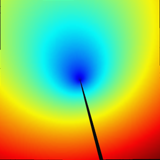
alpha=105°
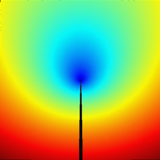
alpha=90°
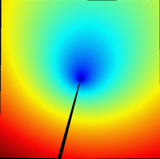
alpha=75°
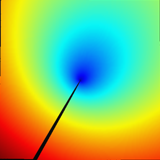
alpha=60°
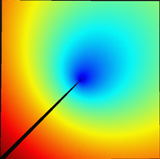
alpha=45°
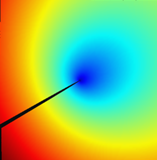
alpha=30°

alpha=15°
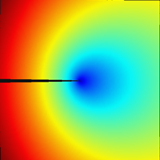
alpha=0°
v3.02.114 SSLP114 - Semi-infinite plane crack#
Summary
This test makes it possible to validate the calculation of an asymptotic field using the XFEM method. The aim is to verify whether modeling XFEM accurately represents the analytical solution, of the mechanics of rupture. This analytical field is the exact solution for the problem of opening a plane crack in \(I\) mode.
The domain is a square plate, cut right down to the middle by a horizontal crack. A load is imposed on all 4 edges to ensure a rigorous opening in \(I\) mode, in accordance with the analytical solution. « Displacement » boundary conditions are applied to the uncracked edges, and « force » boundary conditions are applied to the edge cut by the crack.
To validate this approach, 3 models are envisaged:
Modeling A: we perform a simple calculation using linear elements (TRIA3) for a horizontal crack
B modeling: we perform a simple calculation using quadratic elements (TRIA6) for a horizontal crack
C modeling: we tilt the crack to change the frame of reference for analytical formulas. To maintain the opening in \(I\) mode, we tilt the fields (constraint and displacement) imposed on the edges. On the one hand, the impact of the shape of the domain on the results is evaluated, since in theory, the asymptotic equations do not depend on the geometry of the domain in the crack frame of reference. On the other hand, the robustness of the calculation is evaluated with the deterioration of the packaging.
D modeling: we perform a simple calculation using linear elements (TRIA3) for a horizontal crack, using plane stresses
E modeling: we perform a simple calculation using quadratic elements (TRIA6) for a horizontal crack, using plane stresses
Stress intensity factors \(\mathrm{KI}\), \(\mathrm{KII}\) are tested. For the \(I\) mode, we will have to find \(\mathrm{KII}=0\) and \(\mathit{KI}\ne 0\), with \(\mathit{KI}\) corresponding to the proportionality coefficient imposed on the solution fields (see paragraph [4]).
Likewise, the accuracy of the calculation of the displacement field calculated on the domain is also verified, in relation to the analytical solution.